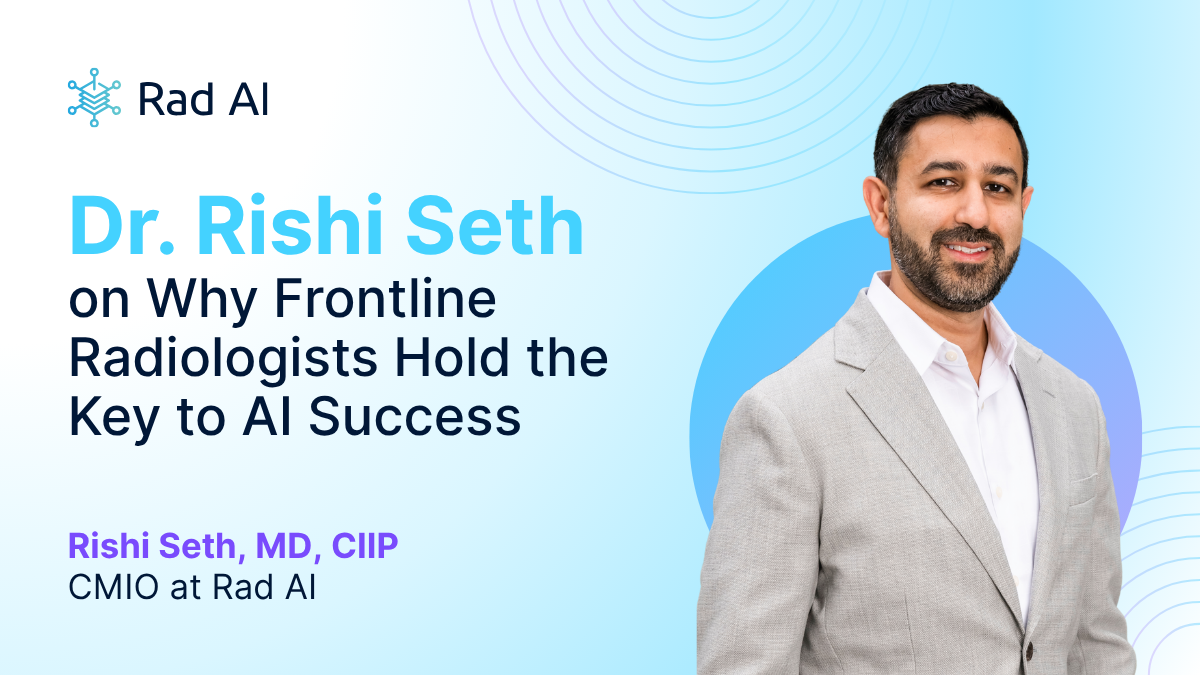Dr. Rishi Seth on Why Frontline Radiologists Hold the Key to AI Success


If radiology’s history has shown anything, it’s that every technological leap begins with radiologists themselves.
In this Q&A, Dr. Rishi Seth, Chief Medical Information Officer at Rad AI, reflects on why AI adoption in radiology has been more complex than anticipated, where genuine traction is beginning to take hold, and how frontline radiologists are already driving meaningful progress through real-world validation and collaboration.
Radiology has been on the forefront of new tech adoption, yet the road to AI adoption has been rocky. What about radiology has made AI adoption harder than it looks, and where do you see hype giving way to real traction?
Given the explosion of ChatGPT and other AI tools, building AI has become easier over the past few years. However, integrating AI into the radiologist's workflow remains a significant challenge. Whether in PACS or in legacy reporting applications, most radiologists are unable to take advantage of many AI tools that exist. At the same time, many of the pixel-based AI tools solve interesting problems, but do not actually save time or reduce mental burden.
Real traction comes where AI directly reduces friction and repetitive actions—report generation, data surfacing, follow-up tracking, and ambient documentation—measurably improving efficiency and accuracy.
Continuing to think about how frontline radiologists are often the first to “kick the tires” on new tech: In your view, what role can they play in piloting, validating, or championing AI tools to help improve acceptance and adoption across a practice?
Frontline radiologists are essential for evaluating AI, defining success metrics, identifying high-impact workflows, and giving real-world feedback on AI outputs. Their participation and feedback help validate, reinforce, and train new models with improved outputs and new capabilities.
These early adopters help define AI use cases, influence product direction, and shape new feature development. Honest testimonials help AI adoption within a practice and throughout the community.
Structured reporting and automated impressions promise consistency, but some argue they risk turning radiologists into ‘checkbox generators.’ Where do you land on that spectrum?
As radiologists, the report is our product. It is how we think and how we approach an examination. Structured reporting adds value and clarity for providers and improves downstream analytics. However, radiology often still depends on narrative. The sweet spot is a hybrid model—structured where precision matters, free text where judgment lives. AI should help translate structure into natural, expressive prose without flattening individuality.
Continue the Conversation
This conversation is part of our ongoing CMIO Q&A series, featuring insights from leaders shaping the future of AI in radiology.
Revisit our first discussion, Three CMIOs, Three Perspectives: How Radiology Leaders See the Future of AI, to explore how Dr. Elizabeth Bergey, Dr. Rishi Seth, and Dr. Andrew Del Gaizo each approached three shared questions about AI’s evolving impact.






